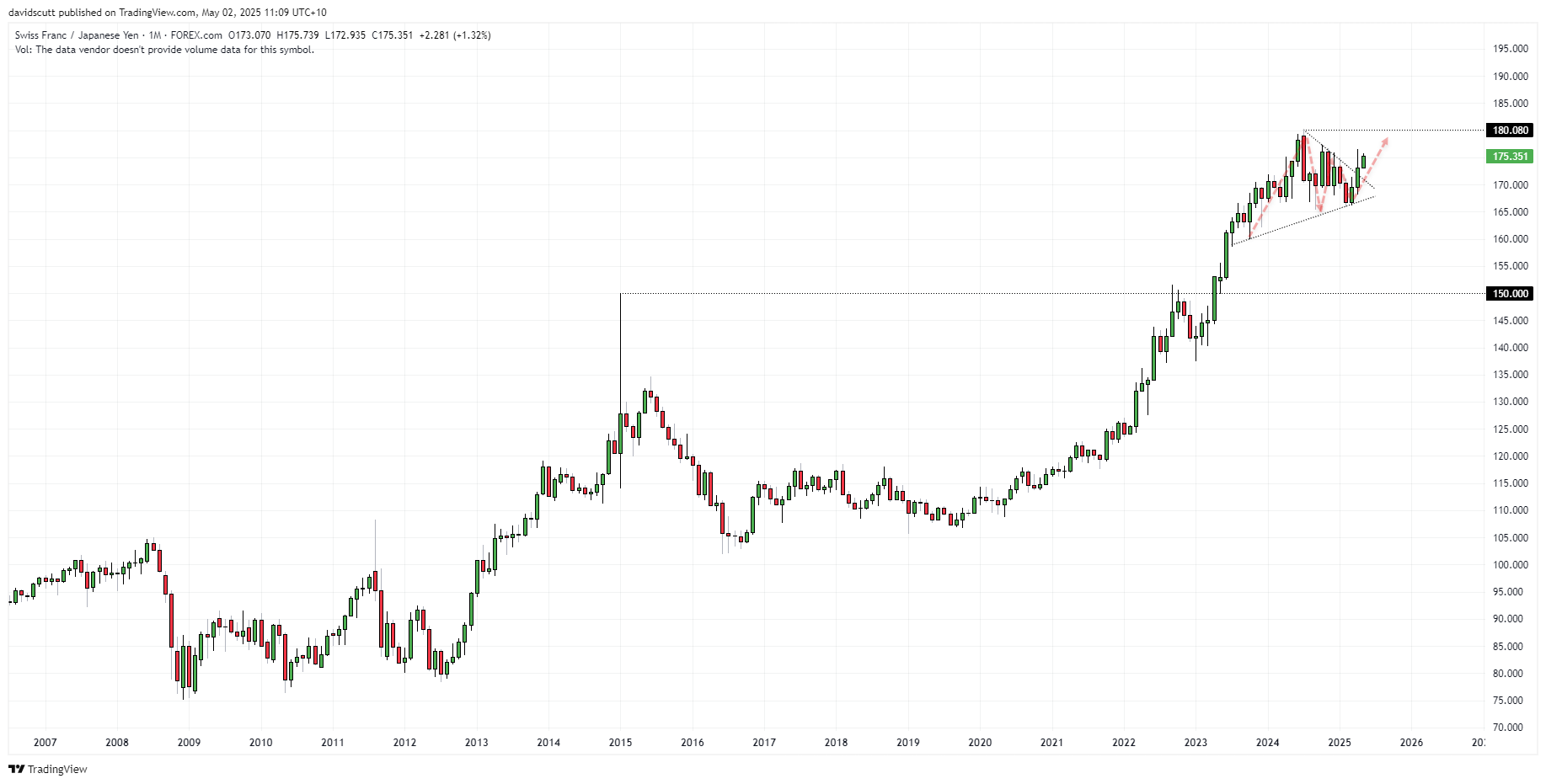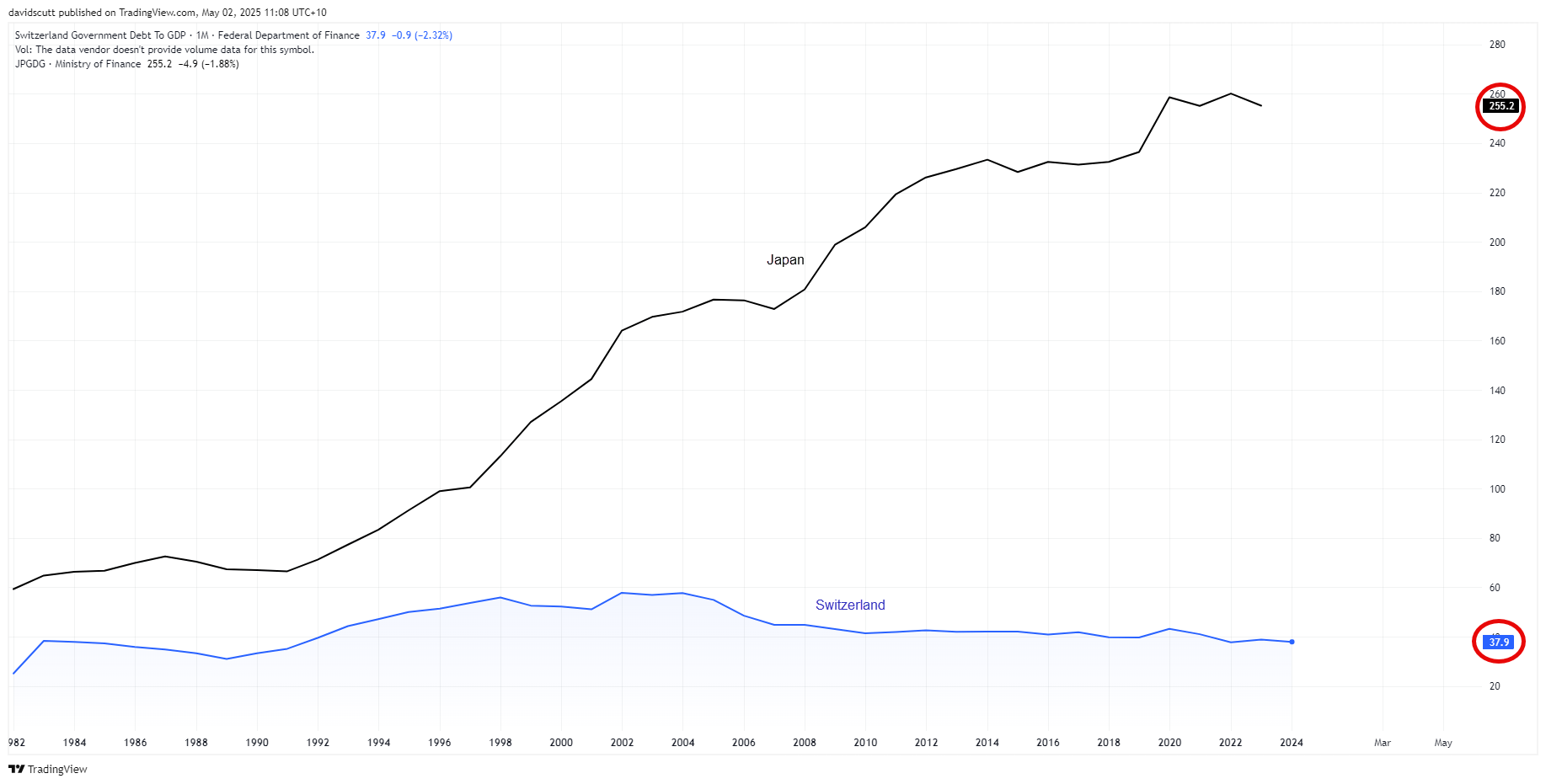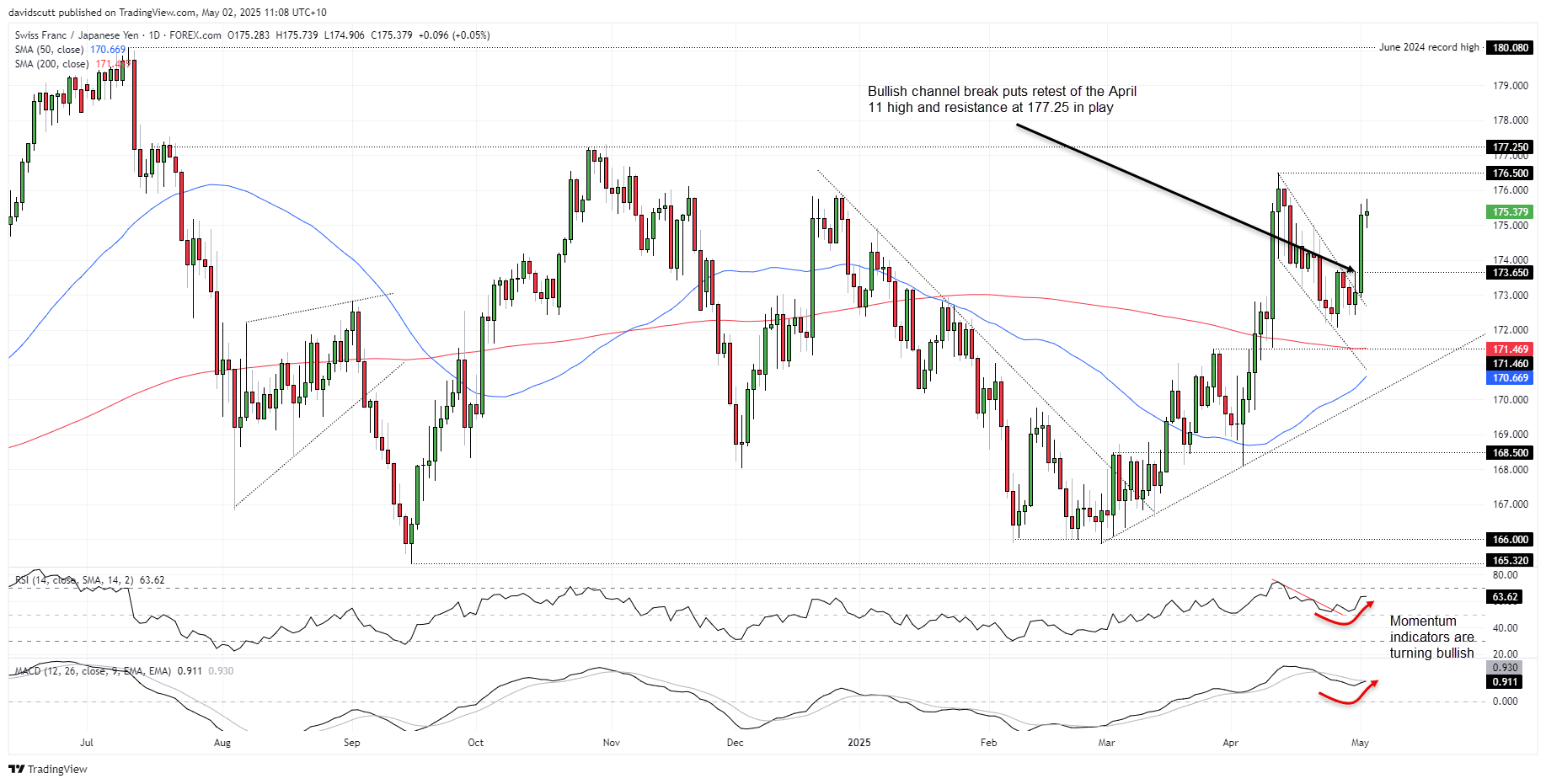MicroStrategy chairman denies selling Bitcoin, says buying more
- Swiss government debt is just 38% of GDP, vs Japan, above 250%
- Yen still behaves like a funding currency, not a haven
- CHF/JPY breaks higher after bullish channel breakout
- Momentum indicators suggest buying dips remains the preferred strategy
CHF/JPY continues to trend higher as the Swiss franc reasserts its status as the go-to currency haven. While both the Japanese yen and Swiss franc attracted demand during April’s volatility, structural differences — particularly Japan’s role in carry trades and massive debt load — help explain why the Swissie keeps outperforming. The breakout on the daily suggests that trend may have further to run.
Not Every Safe Haven Is Created Equal
While traditional safe havens such as the Japanese yen and Swiss franc performed their job admirably in April as heightened levels of uncertainty caused volatility across markets to spike, when it comes to the title of being the undisputed safe haven of the FX world, there really is no contest: the Swissie is way out in front with daylight second.
The monthly chart below underlines that point, with CHF/JPY rising from just above 75 during the GFC to more than 180 last year, an increase of 140% with a large chunk of that occurring since the pandemic. The bullish break of the triangle the pair had been coiling in since July suggests that the increase may have further to run as we move towards the second half of 2025.
Source: TradingView
Explaining Franc Outperformance
So why does the franc tend to outperform the yen over time despite both being considered safe-haven currencies? A big reason is the stark contrast in government finances. As the chart below shows, Switzerland’s debt load sits just under 40% of GDP—among the lowest in the developed world—while Japan’s has surged to over 250%. That divergence undoubtedly feeds into broader market confidence: the franc is seen as a store of value.
Source: TradingView
In contrast, the yen behaves more like a release valve for risk appetite than a traditional haven. Even with the Bank of Japan (BOJ) embarking on monetary policy normalisation, it’s still one of the world’s most popular funding currencies for carry trades into higher yielding, often riskier asst classes. That positioning dynamic means it often weakens when markets are calm, then snaps higher when those trades are unwound, as we saw in April. It’s reactive, not defensive like the franc. For the yen to outperform, it would therefore likely require a prolonged period of market turmoil.
CHF/JPY Risks Biased Higher
Zooming in, it therefore comes as no surprise that throughout the volatility seen this year, CHF/JPY keeps on trending higher as the yen drops and pops on abrupt changes in broader risk appetite.
Source: TradingView
Following a bullish breakout of the descending channel the pair had been trading in since the middle of April, risks for CHF/JPY look again to be skewing higher, especially with momentum indicators turning bullish. RSI (14) is trending higher while MACD is about to cross the signal line above 0. Combined, it favours buying dips over selling rips.
Topside levels of note include the April 11 swing high of 176.50 and resistance at 177.25. A break and close of the latter would increase the probability of a retest of the record high of 180.08 set in July last year. On the downside, 173.65, 172.10 and 171.46 are minor levels that could either act as bases for bullish setups or targets for bears, if the bullish breakout were to reverse.
